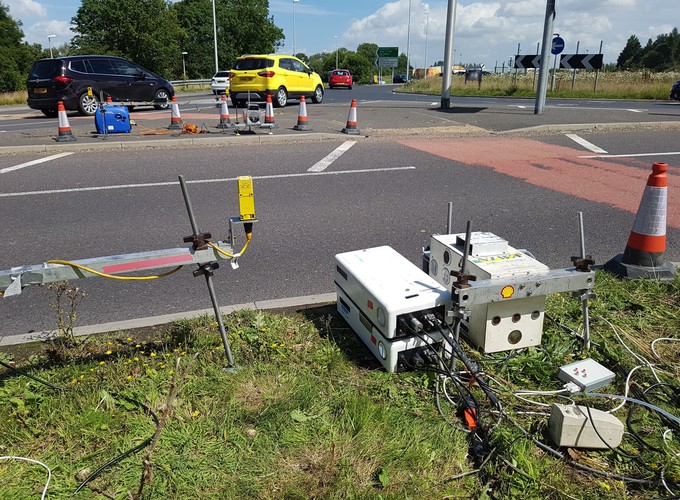Improved quantification of near-road exposure to traffic-related air pollutants
For decades, road vehicles have had a considerable impact on urban air pollution. They are primarily responsible for the elevated levels of air pollution in the immediate vicinity of roads and the significant health effects associated with near-road exposure to pollutants. While emissions of many pollutants have decreased significantly over time, there remain important challenges associated with controlling vehicle emissions and quantifying their wider impact on air quality in urban areas. The health evidence to support the continued reduction in the concentrations of pollutants such as NO2 and particulate matter remains in place. Particulate matter emissions are now dominated by non-exhaust emissions such as tyre and brake wear, which will not be eliminated by switching to electric vehicles (EVs) and hence pose a health risk for decades to come. The near-road environment is complex due to the multitude of vehicle types affecting the emission of TRAPs. While there has been considerable research carried out on measuring real-world vehicle emissions e.g. by instrumenting vehicles or using remote sensing, there has been much less focus on the factors that control near-road exposure to traffic-related air pollutants (TRAPs). This is important because the amount of pollution emitted by road vehicles is not necessarily directly proportional to measured near-road concentrations, due to the complexity of how emissions are mixed in the atmosphere. This issue is especially poorly characterised but is an important factor controlling near-road exposure to TRAPs and is only considered in a rudimentary way in air quality models. A key challenge in this area is the quantification of emissions under highly variable urban driving conditions and especially congested conditions where ‘operational’ emission factors persistently underestimate impacts. These are the conditions where vehicle-induced turbulence (VIT) plays an important but highly uncertain role meaning that it is not known whether underestimates of impacts are associated with poor emissions quantification or the lack of robust treatment of VIT in models.

Slow speed, congested driving is associated with reduced VIT and reduced plume dilution will lead to increases in pollutant concentrations. New developments in instrumentation enable the concentrations of important pollutants to be measured at fast response times of less than 1 second, while also requiring low power enabling flexible battery operation. These new instruments open the potential for a much-improved understanding of vehicle emissions and near-road exposure to pollutants. The principal aims of this PhD are: To develop a much-improved understanding of the factors controlling the near-road exposure to important air pollutants using fast time response instruments coupled with highly detailed individual vehicle information. The main aim will be to link emissions measurement with a quantitative understanding of how vehicle plumes are diluted at the micro-scale from individual vehicles to urban vehicle fleets. Specifically, a Bayesian statistical approach will be adopted to better quantify both emissions and near-road concentrations by incorporating key prior information on the processes into a new quantitative framework. The student would work with leading measurement instrumentation to measure a wide range of pollutants such as nitrogen oxides, ammonia, carbon dioxide, methane and particles. A camera and speed-acceleration system will be used to capture individual vehicle information to create a highly detailed database of vehicle information providing excellent opportunities for detailed analysis. Short duration fieldwork to collect primary new data will be conducted throughout the PhD to generate a new evidence base for the research aims of the project.
